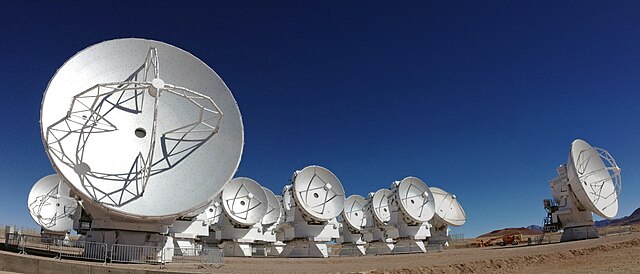The V band ("vee-band") is a standard designation by the Institute of Electrical and Electronics Engineers (IEEE) for a band of frequencies in the microwave portion of the electromagnetic spectrum ranging from 40 to 75 gigahertz (GHz). The V band is not heavily used, except for millimeter wave radar research and other kinds of scientific research. It should not be confused with the 600–1,000 MHz range of Band V of the UHF frequency range.
CableFree V-band high-gain radio for wireless broadband applications
Extremely high frequency is the International Telecommunication Union designation for the band of radio frequencies in the electromagnetic spectrum from 30 to 300 gigahertz (GHz). It lies between the super high frequency band and the far infrared band, the lower part of which is the terahertz band. Radio waves in this band have wavelengths from ten to one millimeter, so it is also called the millimeter band and radiation in this band is called millimeter waves, sometimes abbreviated MMW or mmWave. Millimeter-length electromagnetic waves were first investigated by Jagadish Chandra Bose, who generated waves of frequency up to 60 GHz during experiments in 1894–1896.
Part of the Atacama Large Millimeter Array (ALMA), Chile, America, a millimeter wave radio telescope
A CableFree MMW link installed in the UAE installed for Safe City applications, providing 1 Gbit/s capacity between sites. The links are fast to deploy and have a lower cost than fibre optics.
Millimeter wave fire control radar for CIWS gun on Soviet aircraft carrier Minsk, Russia




